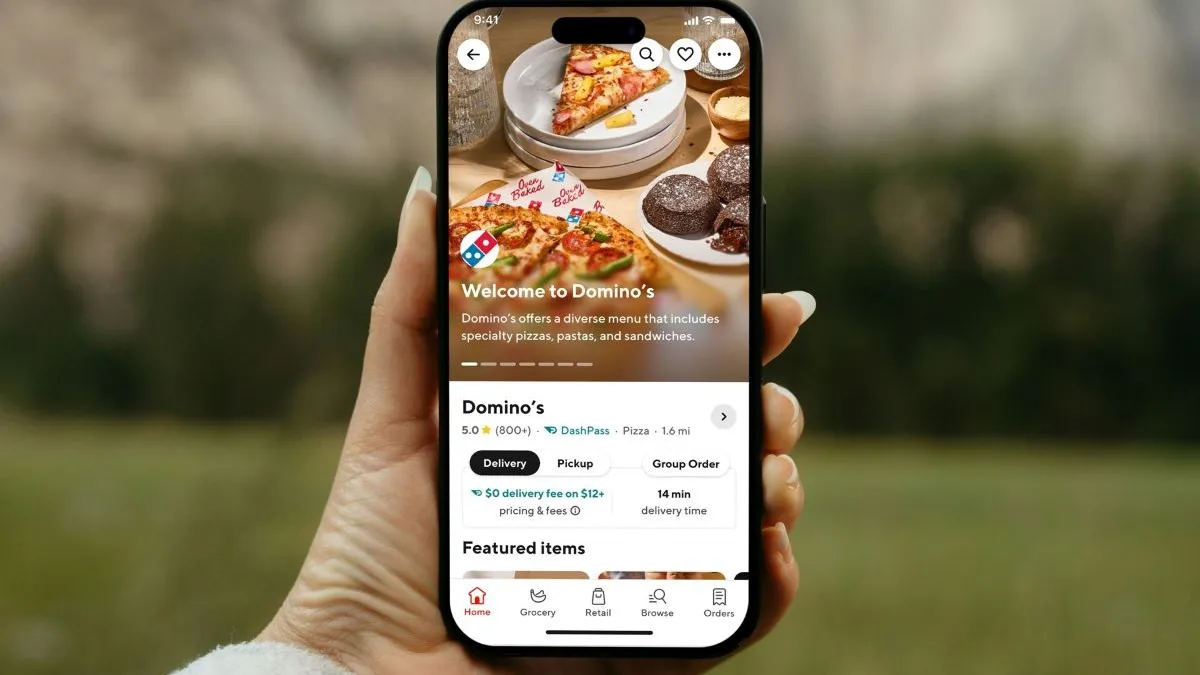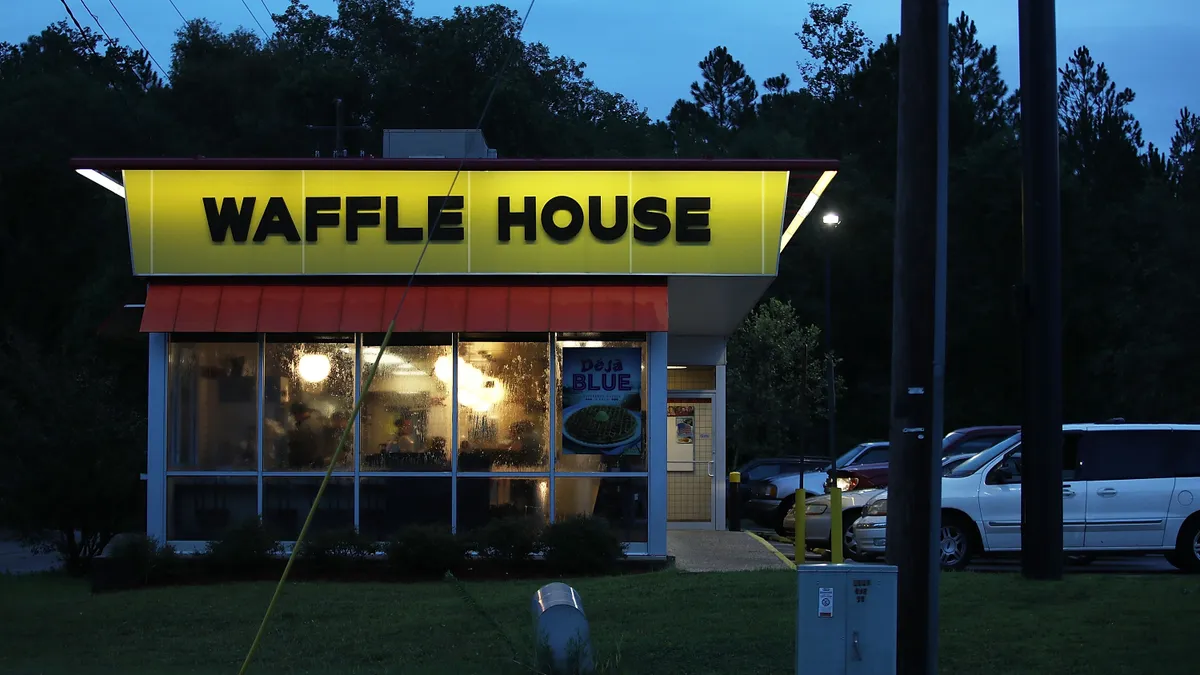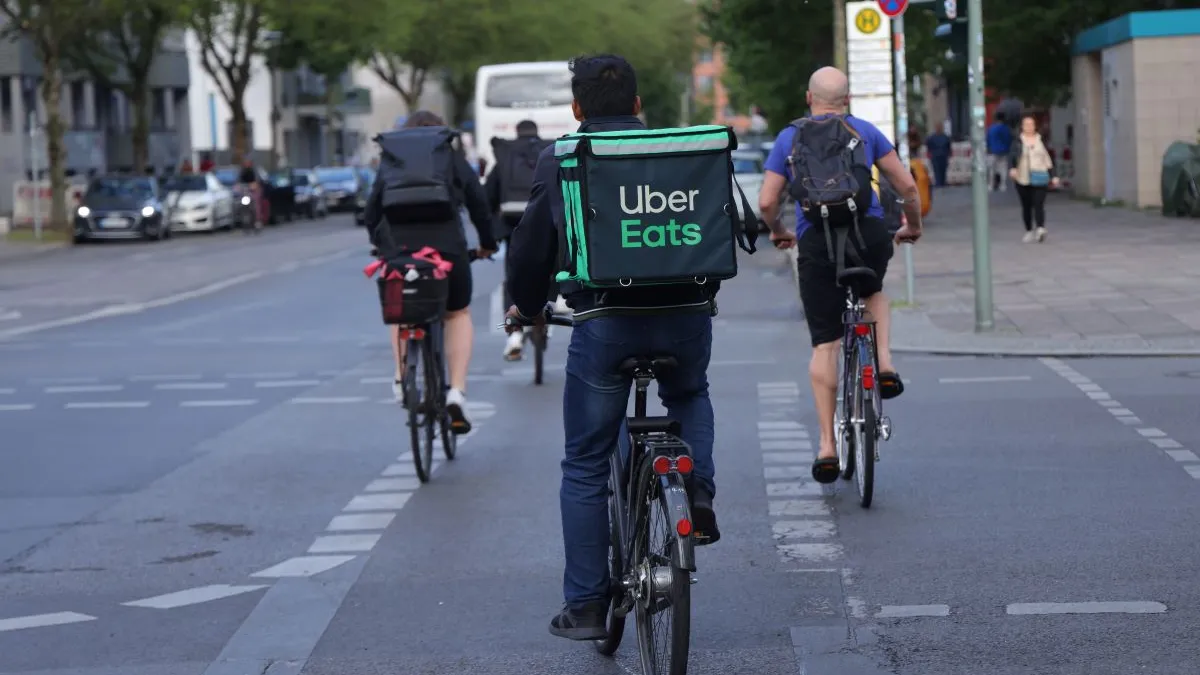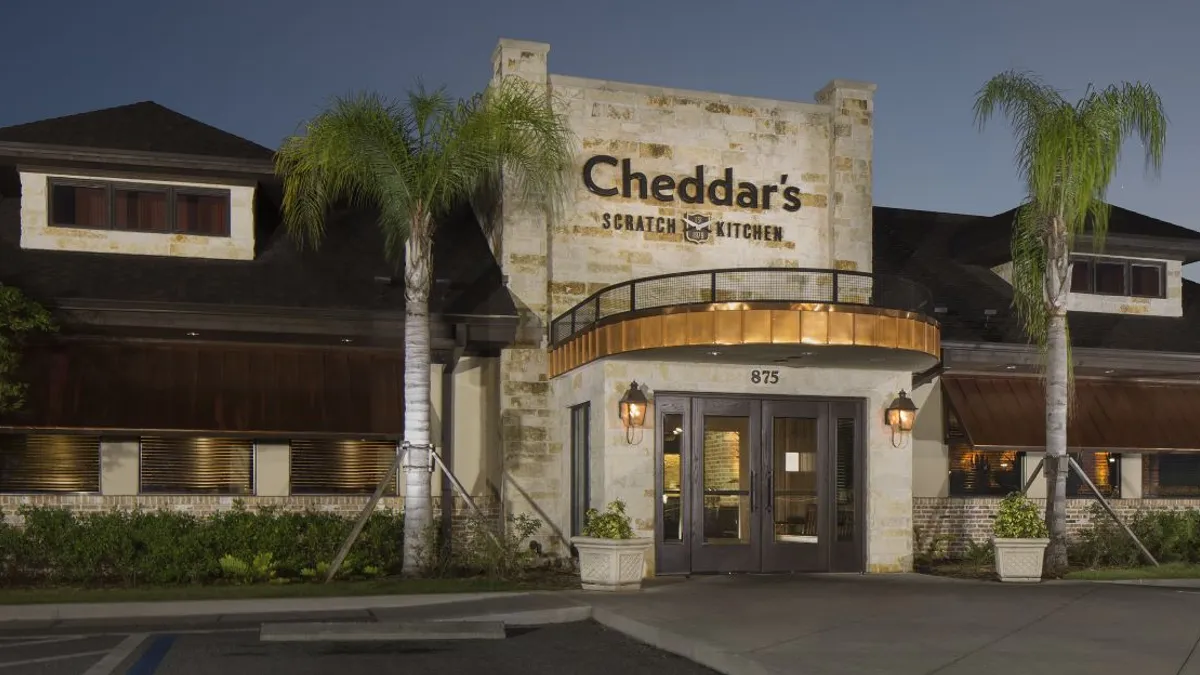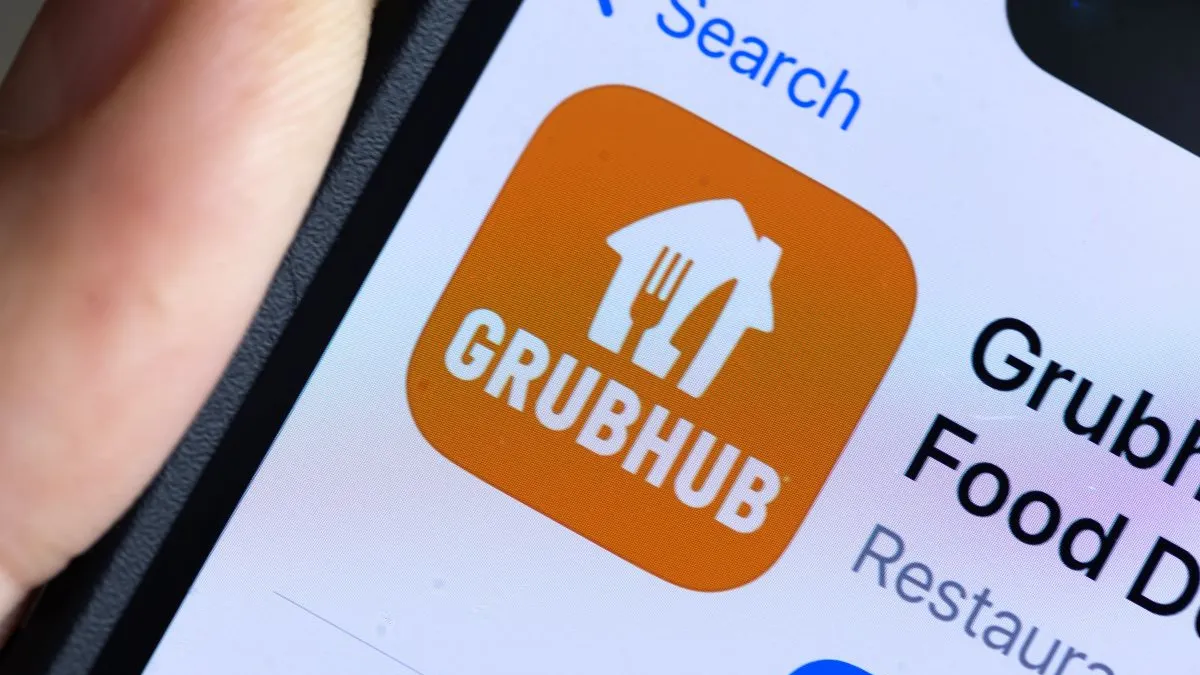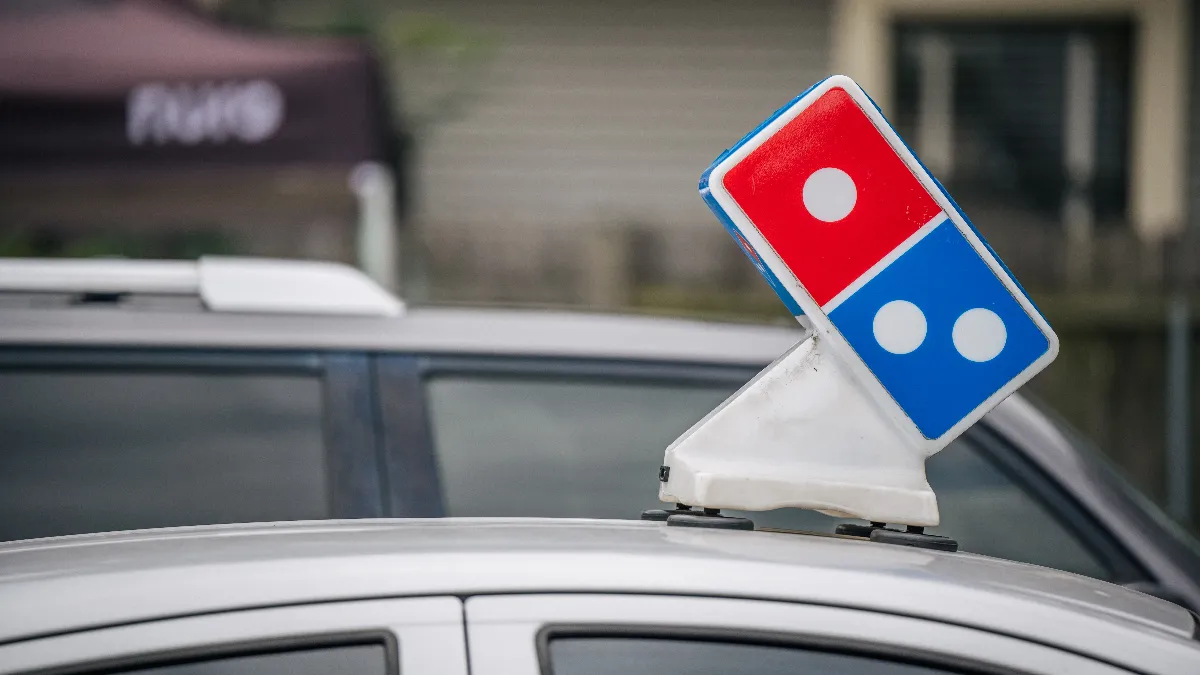The competitive advantages pizza chains like Domino's and Papa John's had in 2020 are coming to an end. The pandemic propelled many restaurants to pivot to online ordering and delivery, allowing them to start to catch up to the two pizza giants.
"While it is likely that these restaurants will use their success in 2020 as a springboard for expansion and continued operational developments, same-store sales growth in the chained pizza category will ultimately revert to the mean in the next several years," Matt Godinsky, research analyst and Euromonitor International, wrote in an email.
Delivery and technologies already in place will only help chains like Papa John's and Domino's maintain their edge, at least in the short term, and both are pushing for more unit growth throughout the country.

More units in the works
With many independent restaurants hit hard during the pandemic, pizza chains will continue to capture parts of the segment vacated by these smaller restaurants allowing brands to increase their market share in the coming year, Godinsky said.
Over the last five years, Domino's added nearly 1,200 new stores in the U.S. and closed fewer than 80, Domino's CEO Ritch Allison said during an earnings call with investors in February. The company has been growing its supply chain network to support franchisee growth, opening two centers in South Carolina and Texas and creating a thin crust production line at its center in Edison, New Jersey, in 2020, Allison said.
While Domino's was pleased with its ability to open new units during the pandemic — 624 locations globally last year — it continues to face challenges in certain markets, including construction and permitting delays, which it will monitor going forward, Domino’s CFO Stu Levy said during the call.
Domino's fortressing strategy continues to drive overall store growth, including at its company-owned locations, Allison said. This tactic, in which more stores are opened within markets where current units are already operating, fuels faster and more consistent service, lowers delivery costs and drives better economics and incremental carryout traffic, Allison said.
Papa John's, on the other hand, completely revised the foundation of its development efforts last year by hiring a chief development officer, Amanda Clark, who then rebuilt the development team by adding new talent and capabilities, Papa John's CEO Rob Lynch said during an earnings call with investors in February.
Papa John's also invested in new tools and resources to support profitable franchisee growth. These helped new and existing franchisees identify development areas, find optimal sites, negotiate leases and guide them through the design and construction process, Lynch said.
One of the most helpful additions was the creation of a data-driven mapping tool that has helped it identify new opportunities in existing and relatively underdeveloped markets, such as California and the West.
"Our current franchisees want us to come into their markets and remap them because they want to grow," Lynch said. "They just thought in the past they didn't have a lot of room to grow and that mindset is changing because of this new technology."

Papa John's is also focusing on building more company stores, which is a high return use of capital, Papa John's CFO Ann Gugino said during the earnings call. These units often act as a "seed for franchisee development activity in new markets or for investors that want to begin with a turnkey operation on which to build," she said.
Papa John's plans to build 25 to 30 company units this year, the most the chain has built in a single year in 20 years, Lauren Silberman, research analyst at Credit Suisse, said in a report emailed to Restaurant Dive.
"[This underscores] the confidence in unit returns, with franchise unit growth expected to grow at an even faster rate," Silberman said.
Papa John's development pipeline as of Dec. 27 has about 1,460 restaurants — 210 in North America and 1,250 internationally — which are scheduled to open over the next six years, according to its earning release.
"Given the health of the domestic system with sales volumes exceeding $1 [million] per unit, [Papa John's] is poised to accelerate development in 2021," Pater Saleh, research analyst at BTIG, said in a report emailed to Restaurant Dive.
Divergent strategies yield delivery strength
Domino's fortressing strategy will continue to help its service times, which suffered a bit during Q2 when it saw an initial influx in demand, Allison said. Its franchisees and corporate stores were able to claw back those times in the subsequent quarters, but improving speed of service will continue to be a long-term focus for the company. In markets where it fortresses, service times improved because the tactic shrinks a store's delivery radius, allowing drivers to travel fewer miles and get to customers faster and with hotter and fresher food, Allison said.
Allison reiterated the company doesn't have plans to work with a third-party delivery aggregator, especially since these relationships can lead to higher costs for restaurants and customers, he said. While Domino’s is working to shrink its delivery areas, aggregators are working to increase them, which can undermine service, Allison said.
While the company has looked at aggregators many times over the last few years, partnering with a delivery platform doesn't make sense for its franchisees economically, Allison said. He added the chain doesn't want to share its customer data with these companies, either.
Papa John's, on the other hand, has leaned heavily on its partnerships with national delivery aggregators, which have helped it scale delivery to more customers during peak times, Lynch said. These deals have helped generate incremental profitable sales and improve staff utilization, he said.
The company said it wants to be where customers order. While most of its most loyal diners are on Papa John's rewards platform, customers that come through aggregator channels often haven’t ordered from the chain before. As these newer diners become more frequent customers, the hope is they will transition to the Papa Rewards program, Lynch said.
"2020 was a transformational year in these partnerships as we saw sales through [aggregators] increase fourfold, contributing in part to our record growth," Lynch said. "And we expect these partnerships to be a key part of our long-term growth plan."
But having robust delivery isn't necessarily going to keep competitors at bay going forward.
While same-store sales jumped dramatically last year for both Papa John's and Domino's, market share didn't change much. Papa John's had roughly a 23% weekly share through much of the latter half of the year while Domino's weekly pizza share was also relatively stable at about 40% during this same time frame, according to reports on Domino's and Papa John's from data analytics and research firm M Science emailed to Restaurant Dive.
"Competitive delivery aggregators have seen larger gains of customer wallets, and continue to steal market share from all traditional off-premise concepts," M Science said in the reports.
DoorDash and Uber Eats grew their shares of wallet substantially since March with strong year-over-year gains, M Science said. That means Papa John's and Domino's may have to be more aggressive to protect their off-premise businesses.
Not all analysts are convinced that third-party delivery will surpass the likes of well-established players like Domino's, however.
"Delivery is a core competency for [Domino's] developed over decades, and we are unconvinced that [third-party operators] will approach [Domino's] execution levels, value or economics anytime soon,"Silberman said in a recent report.
Domino's has focused on carryout to sidestep growing delivery competition, but this channel declined in 2020 because fewer customers were willing to go inside stores. Previously, carryout was a good source of customer acquisition and order count growth for the chain, Allison said.
"Looking ahead, we expect [Domino's] to lean into its carryout business to ease the pressure from delivery, potentially creating a soft landing for same-store sales against tough comparisons," Saleh said.
Domino's carside delivery program, which is about eight months old, has helped the company provide safe carryout for its customers, and the company hopes it can position the chain to compete with drive-thrus, which only exist in about 10% of its U.S. locations. The company continues to improve its service times with carside delivery and the company's aspiration is to reach a point where carside delivery has faster wait times than drive-thrus, Allison said.
Both chains continue to build out digital infrastructure
The chains' creation of technologies that go beyond basic online ordering platforms will also give Papa John's and Domino's an advantage over competitors. Domino's, for example, had been investing in digital ordering technology and delivery infrastructure for many years, Godinsky said.
"Because Domino's already had this digital infrastructure in place, the company was not scrambling to adapt when the pandemic emerged, which in turn allowed them to maintain growth throughout 2020,"Godinsky said.
Last year, Domino's rolled out carside delivery and contactless delivery in response to the pandemic. It added GPS driver tracking, enhanced its makeline and pizza-cutting technology, tools and AI-enabled forecasting to better match demand with capacity in its stores, Allison said.
"These innovations are all designed to increase speed, accuracy and efficiency, allowing us to continue to better serve our customers," Allison said.
The company will continue to invest in its digital ordering platforms, Allison said. Digital sales went up about five points in 2020 and reached 75% of sales throughout the year, he said. These customers tend to have higher tickets because Domino's is able to upsell better digitally.
"Once [customers] start ordering digitally, they tend to be stickier with us over the long term,"Allison said.
The company's loyalty program grew to 27 million active members in 2020, who ordered delivery more frequently than non-loyalty members during the year.
"We spent a lot of time on initiatives thinking about how can we continue to make that treasure of customers and find ways to better serve them at their time of need to drive higher frequency," Allison said.
Much of Papa John's investments in technology last year were to improve productivity, including dough spinners, which make it easier to pound out dough faster, enhancing its makeline and retrofitting cutting stations, Lynch said. The company also centralized its phone orders through a customer service center to allow stores to focus more on creating pizzas than answer the phone, Lynch said.
"This results in incremental transactions and labor savings, not to mention better customer experiences," Lynch said.
The company is also seeing growth in repeat diners, especially when it comes to its digital customers. Papa John's added 10 million new and lapsed customers through its digital channels, helping its Papa Rewards program gain over 5 million new members, Lynch said. Having a growing list of loyal customers also allows the chain to use data to provide more surgical and targeted discounts instead of sending out 50% off coupons every week, Lynch said.
"Our loyalty members are our most valuable customers. They have higher degrees of frequency, they're engaged with the brand and we're able to interact with them and target them for offers that we think will be most conducive to inspiring them to come back more often," Lynch said.
Frequent customers will help strengthen both brands once sales return to normal. These chains will likely see a decline in sales when consumers return to in-person dining, but those that did well during 2020 will likely continue to do well in the future, Godinsky said.
"2020 was a bit of an anomaly in terms of digital ordering and delivery in the foodservice market, and digital orders are expected to decline slightly as consumers return to in-person dining following the pandemic," Godinsky said. "However, digital ordering will continue to grow year-over-year in the long-term, and the pizza delivery chains that were successful throughout the pandemic will continue to be highly competitive within the foodservice industry in both the short and long-term."








